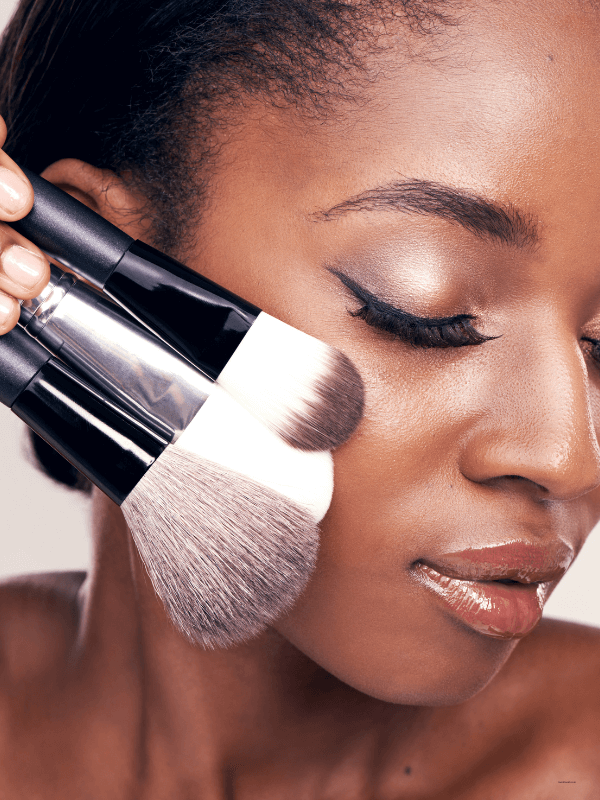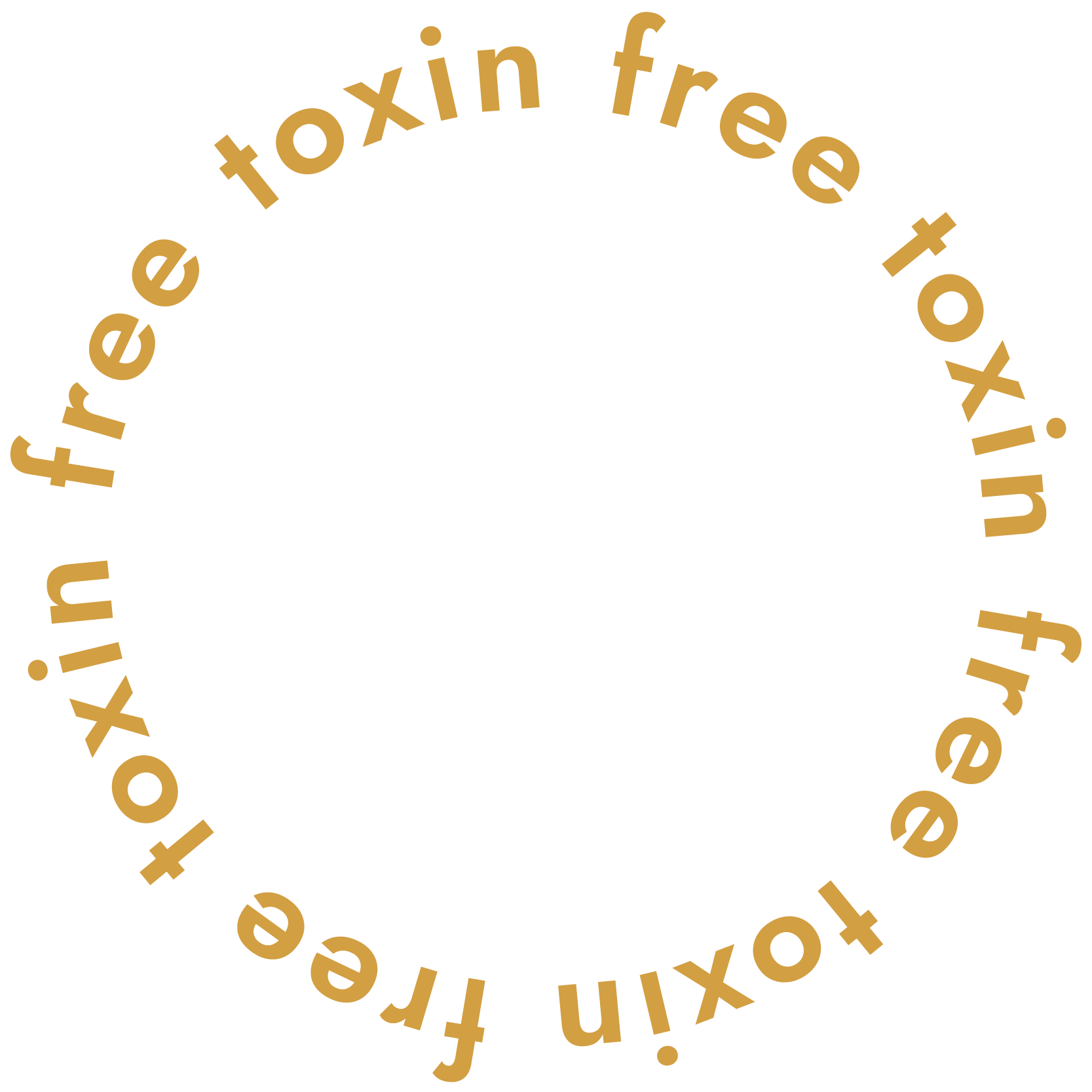Your “clean” foundation probably contains liquid plastic, and even the most popular clean beauty brands defend its use.
As a former environmental toxins attorney turned Clean Living Coach, I’m diving deep into a controversial topic in clean beauty: using liquid plastics like polyethylene in makeup. While brands like Merit and Ilia market themselves as clean, they use ingredients contributing to our growing environmental plastic crisis.
These companies argue that liquid plastic molecules are too large to be absorbed by your skin and are, therefore, “safe.” But when you wash these products down your drain, they join the microplastics in our water system, eventually making their way back into our food, water, and bodies. Even small amounts matter when we consider the cumulative environmental impact.
In this episode, I break down the science behind liquid plastics in cosmetics, share which brands are truly clean, and explain why I’m considering adding these ingredients to my official toxins avoid list. Whether you’re concerned about environmental impact or just want to make informed choices about your makeup, you’ll learn how to identify and avoid liquid plastics in your beauty products.
In today’s episode, we’re chatting about:
- Why popular clean beauty brands are defending the use of liquid plastic
- How to identify plastic ingredients in your makeup
- The environmental impact of washing these products down the drain
- Which brands are truly plastic-free
- The difference between microplastics and liquid plastics in cosmetics
Microplastic vs. Liquid Plastic
So first, what even is liquid plastic? Polyethylene is a common ingredient used in ‘clean’ beauty products. It’s basically plastic made into a liquid.
Liquid plastic is different from microplastics or nanoplastics. Many clean beauty brands claim that their products and ingredients do not contain microplastics. We’re concerned about microplastics and nanoplastics getting into our brains and bodies and polluting the environment. Everyone knows not to use microplastics.
These brands say liquid plastics are too large of molecules to be considered microplastics. They just sit on your face and act as fillers but don’t get absorbed into your skin. These brand representatives claim that there’s no actual toxic harm happening on your skin just because this liquid plastic is sitting on top of your skin.
But then you start to question whether it’s safe or toxic. It depends on your definition of toxic. I’m going to tell you what I think.
Are Liquid Plastics Bad?
I’ve been considering adding plastics to my Avoid List for a long time. I already decided to remove clean products that contain microplastics in the environment because they don’t break down, but it’s a little less black and white when it comes to makeup.
The amount of liquid plastic that is found in things like foundation is minuscule. It’s also not in micro form. It’s in liquid form. Liquid plastic isn’t a known endocrine disruptor or been found to cause cancer. It doesn’t have that direct connection where you’re putting something that’s hazardous on your face. But when you wash it down your drain, that small amount of liquid plastic does end up in our aquatic environment.
It ends up in our drinking water, in the food we eat, in our agriculture, and, from a secondary perspective, back in our bodies. That’s why it’s really important that you try to filter your water, wear more natural clothing, and not drink out of plastic water bottles.
Is that enough reason to avoid the small amount of liquid plastic in your foundation, cheek color, or lip color? I will tell you from an environmental perspective, as somebody who really cares a lot about the toxins in our environment, I don’t use anything with plastic.
If you have a makeup brand that you absolutely love that uses liquid plastic and want that to be part of your ‘ish,’ that’s great! I just wanted to share some different perspectives on using products with liquid plastic in them. Of course, I have a bunch of cosmetic brands in my Toxin Free Shopping Guide that I’ve personally vetted and can confirm they don’t use liquid plastic.
An Exciting Update!
You may have heard on Instagram that I have officially quit my federal government job! I started doing environmental law right out of law school. I have done regulation and policy and became a lobbyist. I have had the most amazing career in environmental toxins regulation and lobbying. Because of the job that I did, I have learned so much about this world and become so passionate about it.
I decided to pursue Toxin Free Ish full-time, and that’s all possible because of you. All my listeners, students, and those of you who use my links and shop on my Toxin Free Shopping Guide have allowed me to finally work for myself.
I have the longest to-do list on the planet, but I’m so excited to finally have time to crank out some ideas I’ve been putting on the backburner.
Want a sneak peek?!
- New membership
- More product reviews
- Build out the shopping guide even more
- Updates to existing freebies and creating new ones
THANK YOU so much for supporting me and my business. I’m here (officially all the time!) to help you make your life a little less toxic.
If you enjoyed this week’s episode, please:
- Leave a positive review or rating wherever you listen
- Shop toxin free products on my Toxin Free Shopping Guide
- Download your free 25 Toxins to Avoid
- Post a screenshot, share what you loved, and tag me on Instagram @wendy_toxinfreeish
- Want to ask me a question to get answered on the podcast? Leave me a voice message here.
Related Episodes:
Episode 26: Detox Your Makeup: My Truly Clean Cosmetics Must Haves
Episode 60: Clean Beauty at Sephora: How Clean is it Really?
Episode 81: From Diplomacy to Toxin-Free Advocacy: My Personal Journey Unpacked, by Unbranded with Suzy Dean
Episode 86: Do You Need Titanium Dioxide-Free Makeup? Here’s the Rundown


+ show Comments
- Hide Comments